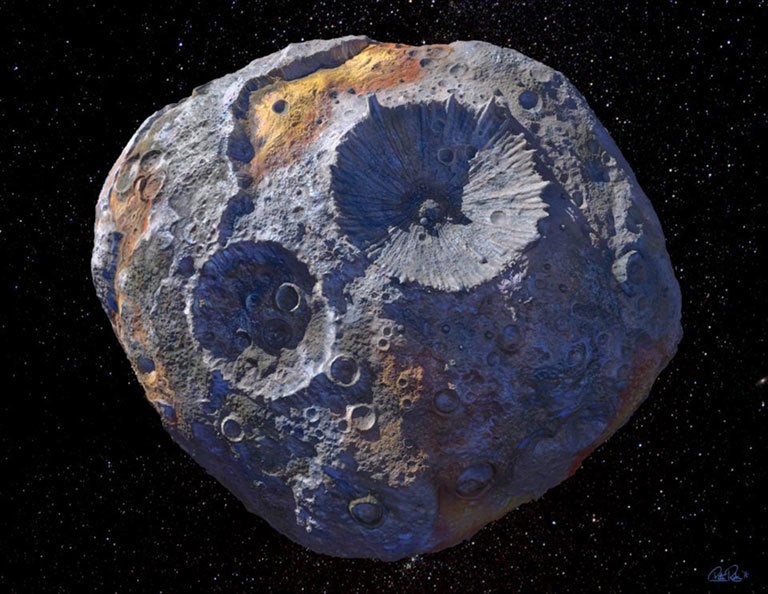Asteroid worth $10 quintillion could be only one of its kind
The debris is one of the largest in the asteroid belt between Mars and Jupiter

Your support helps us to tell the story
From reproductive rights to climate change to Big Tech, The Independent is on the ground when the story is developing. Whether it's investigating the financials of Elon Musk's pro-Trump PAC or producing our latest documentary, 'The A Word', which shines a light on the American women fighting for reproductive rights, we know how important it is to parse out the facts from the messaging.
At such a critical moment in US history, we need reporters on the ground. Your donation allows us to keep sending journalists to speak to both sides of the story.
The Independent is trusted by Americans across the entire political spectrum. And unlike many other quality news outlets, we choose not to lock Americans out of our reporting and analysis with paywalls. We believe quality journalism should be available to everyone, paid for by those who can afford it.
Your support makes all the difference.An asteroid with an estimated worth of $10 quintillion could shed light on the formation of the solar system.
The valuable piece of space debris, which is floating in our solar system’s asteroid belt between Mars and Jupiter, is worth $10,000,000,000,000,000,000.
That is five million times more than the UK’s £2 trillion GDP, and 10,000 times more than the 2019 global economy.
At approximately 140 miles in diameter – approximately one quarter the length of the entire United Kingdom – the asteroid is one of the largest objects in the belt.
The reason this particular asteroid, which is classified as 16 Psyche, is worth so much is that it is composed almost totally of iron and nickel.
Most asteroids are predominantly rocky or icy, with some having a slight degree of metal. Few have been seen that are almost totally comprised of the precious material.
Studying this particular asteroid could reveal the secrets of the solar system, and provide the opportunity to study an object that is akin to the inside of planets like Earth.
Unlike the Earth’s crust and mantle, which has a high mineral composition, the planet’s core is made almost completely of metal - specifically, iron and nickel.
“Psyche could be unique in that it might be an asteroid that is totally made of iron and nickel,” Southwest Research Institute planetary scientist Dr. Tracy Becker said.
“It’s possible that as a Psyche protoplanet was forming, it was struck by another object in our solar system and lost its mantle and crust.”
Psyche, and other asteroids like it, are considered to be the building blocks of the solar system, Dr Becker said.
It is possible that the entire surface of the asteroid is made of iron, however scientists have expressed doubts about that fact.
“We were able to identify for the first time on any asteroid what we think are iron oxide ultraviolet absorption bands,” Dr Becker said. “This is an indication that oxidation is happening on the asteroid, which could be a result of the solar wind hitting the surface.”
Iron has been observed on the asteroid’s surface by measuring it using ultraviolet wavelengths, but Dr Becker noted that even a small amount of iron could dominate these observations.
The asteroid seemed even more reflective at deeper wavelengths.
“This is something that we need to study further,” she said. “This could be indicative of it being exposed in space for so long. This type of UV brightening is often attributed to space weathering.”
The study, “HST UV Observations of Asteroid (16) Psyche”, is published in the Planetary Science Journal.
Nasa is preparing to explore the asteroid via the launch the spacecraft Psyche in 2022.
It aims to understand whether Psyche is a core, or unmelted material, as well as charting the topography of the asteroid and determine how it was formed in comparison to the Earth.



Join our commenting forum
Join thought-provoking conversations, follow other Independent readers and see their replies
Comments